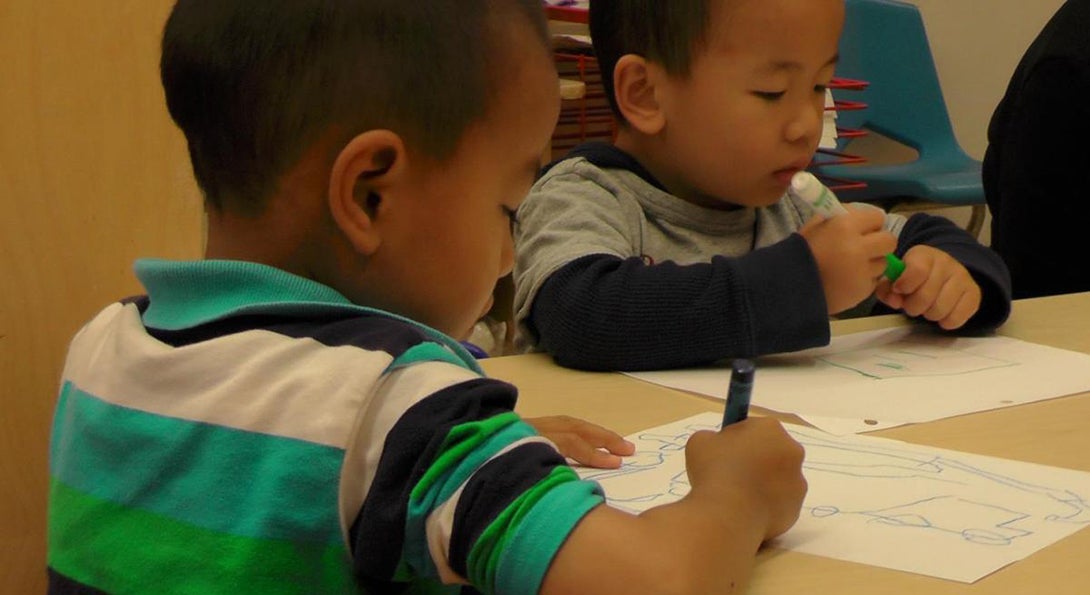Chinese Second Language Education in Chicago

In a nation of immigrants, with the vast majority of the most recent immigrants hailing from Spanish speaking nations in Central and South America, it comes as no surprise that the majority of English as a second language dollars and resources are directed to native Spanish-speaking children. The 2010 Census indicates Chicago’s 77 community areas feature 51 neighborhoods with Spanish as the primary language spoken other than English. Yet at least 38 other non-English languages are spoken throughout Chicagoland (African dialects are counted only once as “African Languages”), and the city’s 22,674 Chinese speakers represent the third largest native language group in the city, following Spanish and Polish.
Strolling into Chicago’s Chinatown at the intersection of Cermak and Wentworth is more than just a cultural experience. For the occasional visitor, Chinatown is nothing more than a food experience. For its residents, Chinatown is a literal stepping stone from Gangzhou Province to the hope of a better life. The gilded and gabled archway beckoning Chinatown’s crowded streets is a portal into a world of immigrant struggles, of setting down new roots and the stereotypical but omnipresent parental dream of a better life for children.
Those children are bantering away in Meredith Chambers’ early childhood classroom at the Chicago Chinese American Service League. About 20 children bounce around the colorful but careworn classroom, pattering away in Taiwanese, Cantonese, Mandarin and mixed English versions of these languages. Chambers, who earned an alternative certification in early childhood education from the University of Illinois at Chicago College of Education, has one central job: get these kids ready to speak English as they enter kindergarten, all while respecting their Chinese cultural heritage at the same time.
The result is a challenge to build a model based on the children’s native language skills while Chambers works to identify their initial abilities and competencies in English, math and science. To build vocabulary and skill sets in math and science, Chambers uses students’ initial language initially while adding in English as new concepts are introduced.
Chambers spends a significant amount of time regulating language use to develop her students’ English speaking skills. Many of her students engage in language mixing, a natural practice in which students draw from their native language when they cannot remember an English word. Chambers practices validating students’ responses by repeating back to them what they just said, but with a full English version. Her Chinese-speaking co-teachers do the same thing but repeat back phrases in full Chinese.
“It’s a program that focuses on celebrating their present culture but also adding on this new American culture they are a part of,” Chambers said. “It’s not only learning from me but my co-workers with them in Chinese dialects as well to provide the cultural support they need.”
Building cultural support starts in the home, and Chambers coordinates twice-annual formal meetings with parents as well as two more home visits conducted by her Chinese-speaking co-teachers. Co-teachers examine the learning environment at home and provide resources for parents to meet both children’s educational needs and the more pressing life needs facing recent immigrants—employment, visas and acculturation.
This communication link with parents is vital in building an individualized learning plan for each student. Co-teachers report back to Chambers as to what parents are hoping for their children to learn in the early childhood setting, and Chambers crafts lesson plans around these wishes and devises take home activities linked to curriculum in the classroom.
One example of this classroom-to-home link is a unit on gardening, in which students grow a plant from a seed at home. Parents and their child decided together what they would grow. Back at the school, students completed the initial planting and then brought their plant pots back home to foster into life. The early childhood center also includes a vegetable garden, aiding students in not only learning the life cycle of plants but developing literacy and English vocabulary skills.
And that, at the core, is the crux of the challenge. Language is the name of the game. The foundations Chambers is setting in math and science will crumble without the language base. On an unassuming quiet street in Chicago, away from the hustle and bustle of Chinatown’s main thoroughfares and out of the limelight of the national ESL conversation, the battle to learn English continues on.